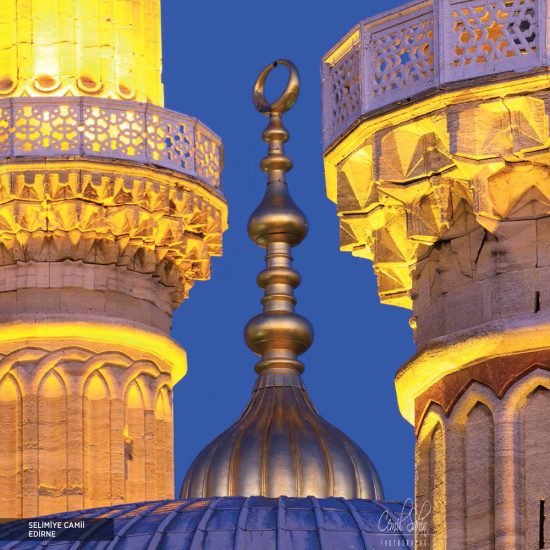Finial means “indicator, declarer, trace, omen, sign, impress”. The first finial examples in the Turks are found in khan tents in Central Asia. Finial with a crescent form was used by Karakhanids for the first time. The finial is mostly used in religious and social buildings such as mosques, tombs, madrasas, bazaars, and imarets. The parts that make up a finial are called as cube, bottom ring, pear, neck, upper ring, and crescent from the bottom to top. The finials are used as complementary elements in mosques such as on the top of the dome, minaret cone, top cover of the fountain and wooden cone of the minbar; their remarkable part is the crescent, they often consist of crescent, horn, horseshoe, “zombah”, leaf imamah, and similar shapes. Typically, the finial is made of copper and brass. The outer surfaces of the finials are coated with gold foil to prevent them from being affected by weather conditions.
Finial craftsmanship is an ancient art, performed by copper masters. However, in today’s technological conditions, the use of plastic, polyester and fiberglass finials has become widespread in many places of worship; thus, the finial masters cannot find the ground to transfer their art to new generations.
Teknom Yapı is committed to supporting the masters performing ancient arts in their struggle to maintain the art. It works with masters who memorize traditional methods, and the finial masters are among them. In Turkey, there are still masters who are determined to sustain this art in their workshops. At the project stage, we share ideas with these masters who beat copper, we decide on the length of the finials relative to the height of the dome, the styles of finials in accordance with the architectural order of the mosque, their aesthetics, traditional lines, the thickness of the material to be used, and whether or not using a support in the finial. Teknom Yapı has been leaving long-lasting works collaborating with competent finial masters.

